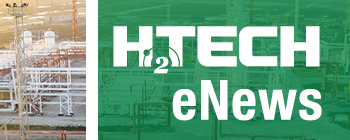News
Construction of the base load power hub (BLPH) H2 production-battery storage platform completed
The construction of the base load power hub (BLPH), the first H2 production and storage platform designed and built for offshore conditions, has been completed. The innovative project was developed by CrossWind, a joint venture of Shell and Eneco.
The aim of the project is to gain experience in designing and building a platform that can be used to stabilize the electricity production of wind farms by storing energy during periods of high wind speeds and releasing it during periods of less wind. CrossWind has developed a unique platform that combines a 2.5-MW electrolyzer, H2 storage and conversion back to electricity with a 5MWh electric battery. This system can absorb both hourly and daily fluctuations of the wind profile, ensuring a more stable power output. The installation is 19 by 41 meters and weighs a total of about 2200 tons.
Maria Kalogera, Innovations Manager CrossWind said, “The BLPH represents a groundbreaking concept, combining an electrolyser, a fuel cell and battery storage system designed and built for offshore conditions. Overcoming the complexities to make this system operational was a significant challenge. We are now ready to share our acquired knowledge, enabling future projects to benefit from our experiences and accelerating the energy transition.”
After completion of the final commissioning tests at the Rosetti Marino Group yard in Italy, the BLPH will be transported to the Netherlands by ship. The platform is expected to be set up in Eemshaven this summer. Ownership will then be transferred to offshore innovation company DOT, in agreement with the Netherlands Enterprise Agency (RVO). With the BLPH, DOT wants to work in collaboration with Groningen Seaports and TNO to further develop knowledge about H2 production on a platform.
Rene Peters, TNO said, “The placement of the BLPH in the Eemshaven, part of the Dutch H2 Valley, offers a wonderful opportunity to gain knowledge in the very short term that is needed to realise similar offshore wind energy hubs on a large scale in the future. We encourage the choice to test the platform onshore now. It makes the platform easily accessible to a wider network of researchers and energy institutes, which can accelerate innovation across the industry.”

